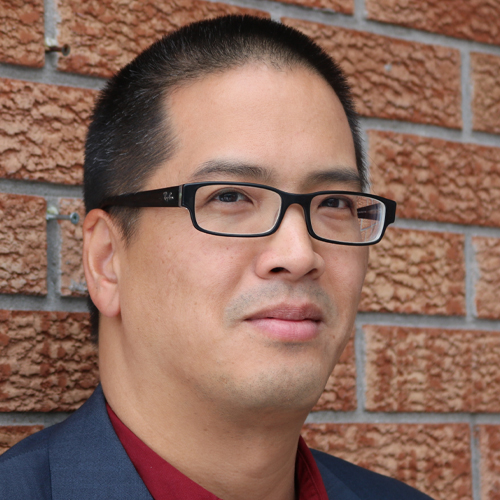
As issues of equity, diversity and inclusion (EDI) become salient in Canada, many public institutions have responded. Most school boards and universities, for instance, have some sort of EDI plan or policy detailing how they will uphold these principles in all of their activities.
In practice, however, policy implementation is hard, and many institutions end up engaging in what political scientists and sociologists term decoupling. This concept describes instances where organizations adopt new policies that give the appearance of responding to major changes in public opinion without implementing new policies in any meaningful way.
Overcoming decoupling requires significant and conscious effort from organizational leaders and employees and from those who are served by the organization. This is especially true when it comes to elementary, secondary and post-secondary education in Canada.
In my city, the local school board has been trying to implement its EDI policy in several ways. It renamed two elementary schools due to concerns about allegations of racism and discrimination associated with the original namesakes. It regularly hosts and promotes various thematic months and days honouring marginalized groups in Canada, such as Black Canadians and Indigenous communities. More recently, the board offered its teachers the option of taking some paid days to better incorporate EDI into their teaching practices.
The Functionary: Kathryn May’s newsletter on the public service
Newsroom diversity will improve racial equity in the media
Canada needs to get on with tackling racism in concrete ways
All these efforts are positive and should be applauded. But underneath their surface is a strong undercurrent of conscious or unconscious bias against and resistance to equity, diversity and inclusion.
Equity means “the removal of systemic barriers and biases enabling individuals to have equal opportunity to access and benefit from the program.” Although it’s only been a short time since the new school year started, my family has already been bombarded with dozens of requests from schools to pay for day planners, class supplies, music and athletic uniforms, extracurricular activities (sports and arts ensembles) and school field trips.
For high income families, these fees are not a problem of course. But for middle- to low-income families, they are a systematic barrier to equal opportunity. Some might say that students that can’t afford the fees don’t need to participate in sports teams, music and dance groups or field trips. That might be true, but it’s also true that not being able to participate in these activities because of one’s financial situation is – by definition – inequitable.
Of course, many will say that the obvious solution is simply to call for provincial governments and local school boards to pay for these activities. Sure. But at the same time, teachers and leaders need to think harder and more carefully about whether certain things, like music and athletic uniforms, are necessary to student success given the inequities involved.
Or they might explore novel solutions like providing students with a school branded t-shirt that they can use for all sports teams, music and dance ensembles, and other school-related activities that require visual homogeneity.
How about diversity, which is defined as “differences in race, colour, place of origin, religion, immigrant and newcomer status, ethnic origin, ability, sex, sexual orientation, gender identity, gender expression and age?”
Earlier this year, I attended the local Kiwanis music festival to listen to four or five local high school bands compete for musical excellence. I was immediately struck by three things, all of which surprised me given the board’s EDI policy.
First, there was little to no ethnic diversity among the students who had chosen to play in these bands, yet 2016 Census data suggests that about 16 per cent of residents in my city are of non-European descent.
Second, every single band director that evening seemed to be a white man, without exception.
Third, the compositions chosen to expose students and audiences to ethnic diversity, such as the piece, “Terracotta Warriors,” were almost exclusively written by white male composers.
The successful implementation of policies promoting diversity requires descriptive representation. This is a term used to describe instances where the socio-demographic composition of employees and leaders is expected to mirror the larger society in which the organization is embedded. When descriptive representation is achieved, it can increase diversity by creating role-model effects, in which members of underrepresented groups become more likely to join groups and participate in activities that they had previously not joined or participated in before.
It can also lead to better substantive representation. This means increasing the number of people from marginalized groups in an organization can also increase the likelihood that issues relating to those groups will be addressed. Properly implementing diversity policy means hiring, all else being equal, more leaders and employees from underrepresented groups.
The mandate of N.B.’s systemic racism commissioner perpetuates the problem
Ottawa could implement two accountability measures to help eradicate racism
What about inclusion, which is defined as “the practice of ensuring that all individuals are valued and respected for their contributions and are equally supported?”
A key barrier to inclusion is the school curriculum. Most music programs, for instance, are designed to teach and reproduce the Western classical tradition. The songs students play have been composed mainly by white men.
Music history focuses on Western European composers and musical traditions and the method of learning is rooted in standard notation rather than learning music by ear, a practice found in many non-European cultures.
In high school English classes, some students continue to read Shakespeare every year. In art classes, some students struggle with the dilemma of whether to confront their teachers about not being able to complete an assignment that requires them to draw images that go against their religious beliefs (such as the faces of creatures that have souls).
Fostering inclusion means radically rethinking school curriculums by centering learning around exposure to diverse voices and approaches beyond the traditional ones. It means spending less time learning about dead European composers and exposing children to the diverse Canadian composers of modern music. It means ensuring that students read novels written by the many acclaimed Canadian authors from diverse backgrounds.
Decoupling is a major problem for many organizations and institutions in Canada. We can overcome EDI decoupling by pushing organizations, like schools, to hire more diverse voices and broaden their scope. We also should ask them to pay more attention to the invisible financial and non-financial barriers that exist underneath the surface of our daily practices and expectations.












